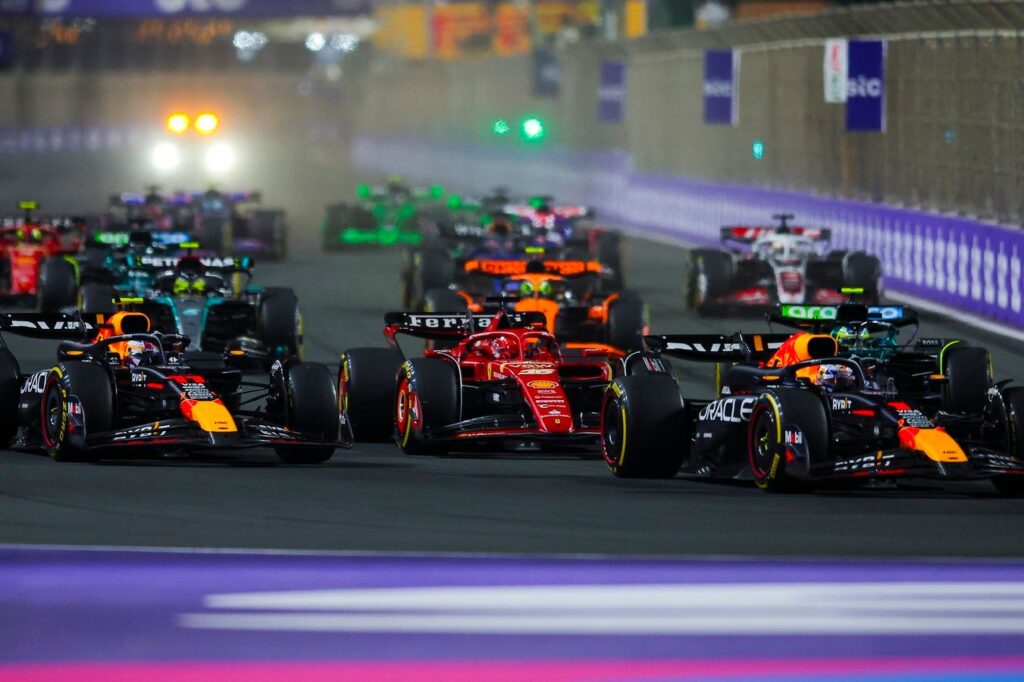Fan engagement at the F1 is about to be changed by Web3 (Photo by Eric Alonso/Getty Images)
A new collaboration between Oracle Red Bull Racing, Gate.io, and blockchain platform Abstract is introducing a different kind of Formula One experience—one built entirely onchain. As of 2024, Formula 1’s global fanbase has grown to approximately 826.5 million, marking a 12% increase from the previous year. The sport is experiencing growth among younger and more diverse audiences. 42% of the fanbase is under 35 years old, and 41% is female, up from 37% in 2018
The three companies have partnered to launch In the Moment, a co-branded digital collectible series tied to the 2025 F1 season. The project blends motorsport history with digital asset infrastructure, and it represents a notable development for both Web3 adoption and fan engagement.
What It Is: Collecting Iconic Moments, Onchain
The In the Moment campaign consists of 24 digital collectibles, each commemorating a defining moment in Oracle Red Bull Racing’s history. The collectibles will be released throughout the season, starting with the Monaco Grand Prix and spanning other race locations such as Silverstone, Singapore, and Abu Dhabi.
The collection includes contributions from six digital artists—including Timpers, DutchTide, and AlienQueen—alongside designs developed in-house by Oracle Red Bull Racing. Premium editions (Silver and Golden) introduce rarity tiers and allow fans to unlock added features such as claimable rewards and collection tracking.
The entire series is hosted through Gate.io and runs on Abstract, a blockchain infrastructure layer designed to reduce the complexity typically associated with Web3 participation. Users can collect, verify, and track their items with minimal friction. This enables a broader group of fans, including those outside the crypto-native community, to take part in a blockchain-based experience.
Play Puzzles & Games on Forbes
Why It Matters: A Real-World Test of Web3’s And Onchain Broader Utility
This project stands out in part because of its scale and visibility. Formula One has a global fan base, and Oracle Red Bull Racing is among its most followed teams. A blockchain-based campaign operating at this level introduces Web3 mechanics—like ownership, scarcity, and transparency—to a mainstream audience in a real-world context.
The move also reflects a shift in how organizations are thinking about audience engagement. Rather than offering static content or merchandise, this model turns moments into digital assets that fans can own, share, and interact with. It moves engagement from passive to participatory, while creating new types of loyalty mechanics.
Fan Engagement is getting an upgrade with blockchain (Photo by Mark Thompson/Getty Images for Oracle … More
For the blockchain space, the campaign provides a use case for fan-facing experiences that don’t center on financial speculation. Abstract’s role is particularly relevant: it serves as the infrastructure layer, but its design focuses on user accessibility—lowering entry barriers that often deter non-technical users from engaging with blockchain-based platforms.
Why It’s a Milestone: Web3 And Onchain Moves Closer to Cultural Relevance
While Web3 has seen steady innovation, many applications remain technical or insular. In the Moment is one of the first large-scale, co-branded efforts to bring blockchain utility into an existing global fan ecosystem. The campaign is framed around culture—sports, art, and shared history—rather than token prices or trading volume.
This kind of initiative could become a model for how sports organizations, brands, and entertainment companies approach digital engagement in the future. By tying digital collectibles to specific narratives and events, the experience becomes less about the technology and more about the story.
Importantly, Abstract operates in the background to support that shift. Its infrastructure handles the technical demands of on-chain activity, but the user-facing experience focuses on simplicity—claiming, collecting, and verifying ownership without requiring deep blockchain knowledge.
Digital Render of the RB21 with the Livery for 2025 Suzuka GP with Honda. // Oracle Red Bull Racing … More
What It Means for the Onchain And Web3 Industry: Blueprint for Participation, Not Just Promotion
For fans, this campaign offers a new way to engage with Oracle Red Bull Racing—through digital collectibles that represent specific achievements or events. It moves beyond viewing or social media participation, and introduces ownership and interaction as part of the fan experience.
For brands, it demonstrates how Web3 can serve as a tool for creating sustained engagement that blends emotional connection with digital infrastructure. The shift from giving away content to co-creating experiences may become a standard approach in how loyalty is designed.
For the broader tech ecosystem, this project signals that blockchain platforms are beginning to adapt more to the needs of mainstream users. Abstract’s involvement shows that infrastructure doesn’t have to be a barrier—it can enable new formats without making the technology the focal point.
Looking Ahead: A Measurable Step Toward Mainstream Use For Onchain
As global companies continue exploring new ways to connect with their communities, campaigns like In the Moment show that blockchain can function in service of meaningful, scalable experiences—not just as a backend system or speculative platform.
Oracle Red Bull Racing, Gate.io, and Abstract have delivered a project that is measurable in impact, global in scope, and concrete in execution. It’s a signal that Web3 isn’t just building for the future—it’s starting to operate in the present.
And for those watching the evolution of blockchain in real-world applications, this marks an important checkpoint: a high-profile, non-financial, on-chain activation that puts utility, culture, and user experience at the center.
Did you enjoy this story about Onchain and F1? Don’t miss my next one: Use the blue follow button at the top of the article near my byline to follow more of my work.
Read the full article here
